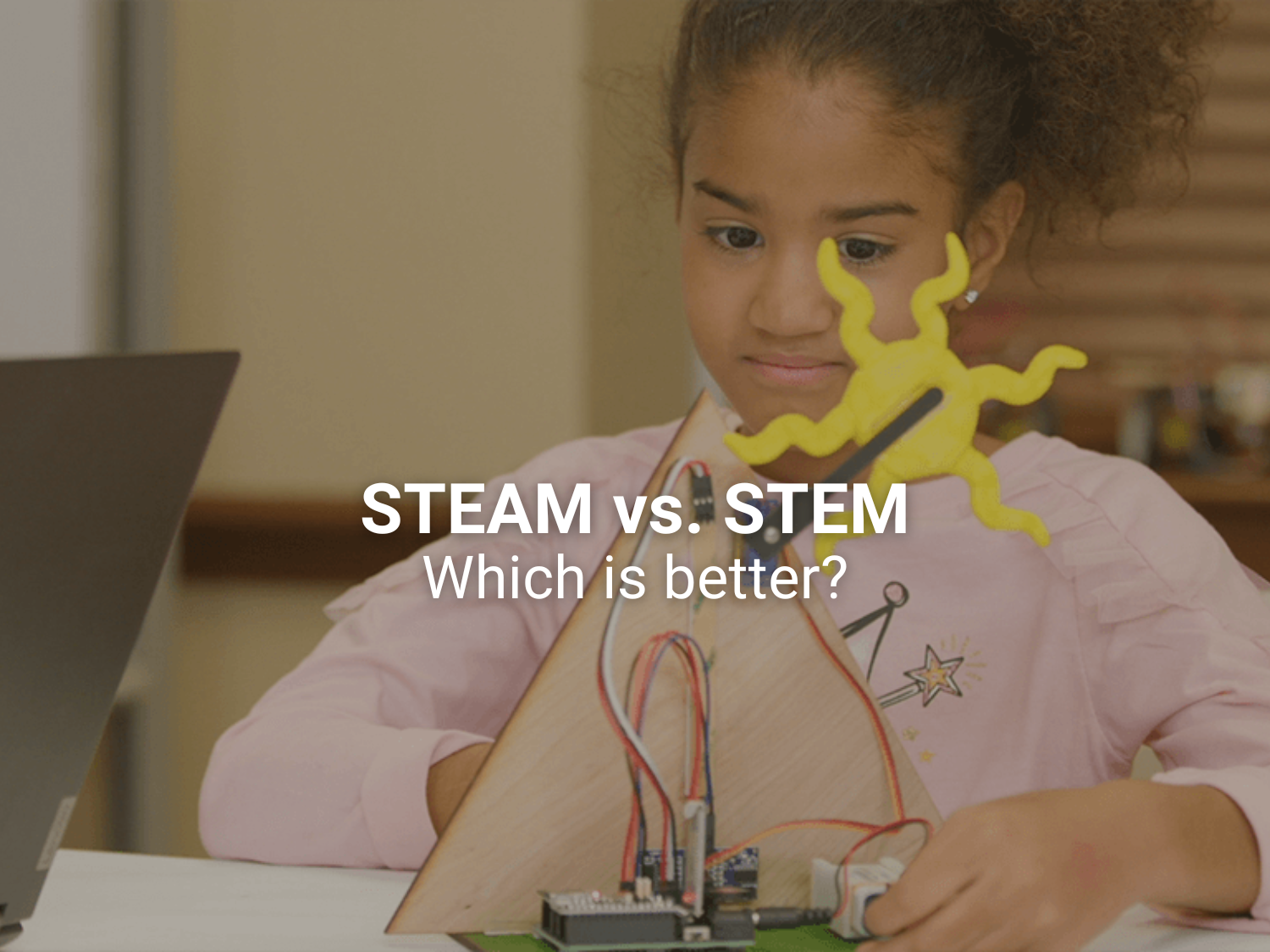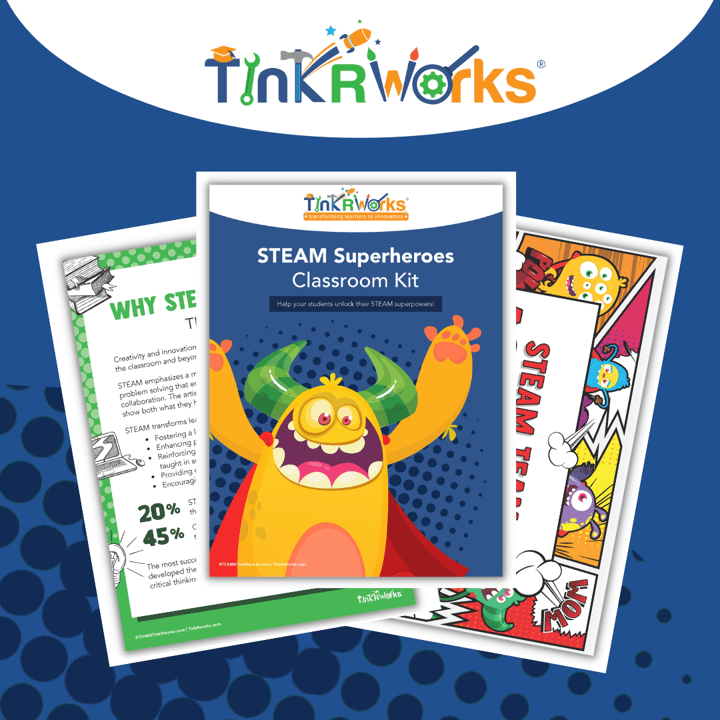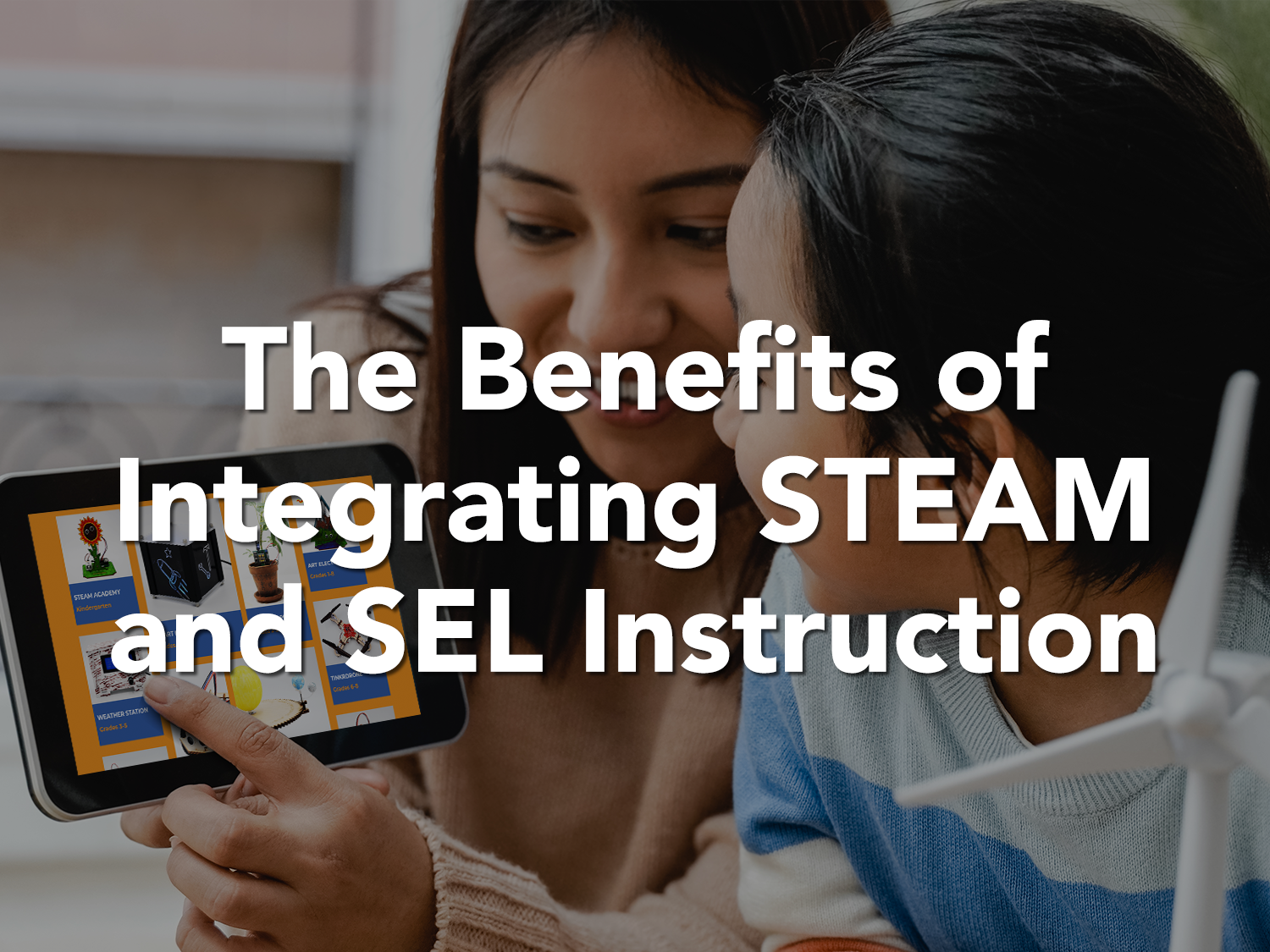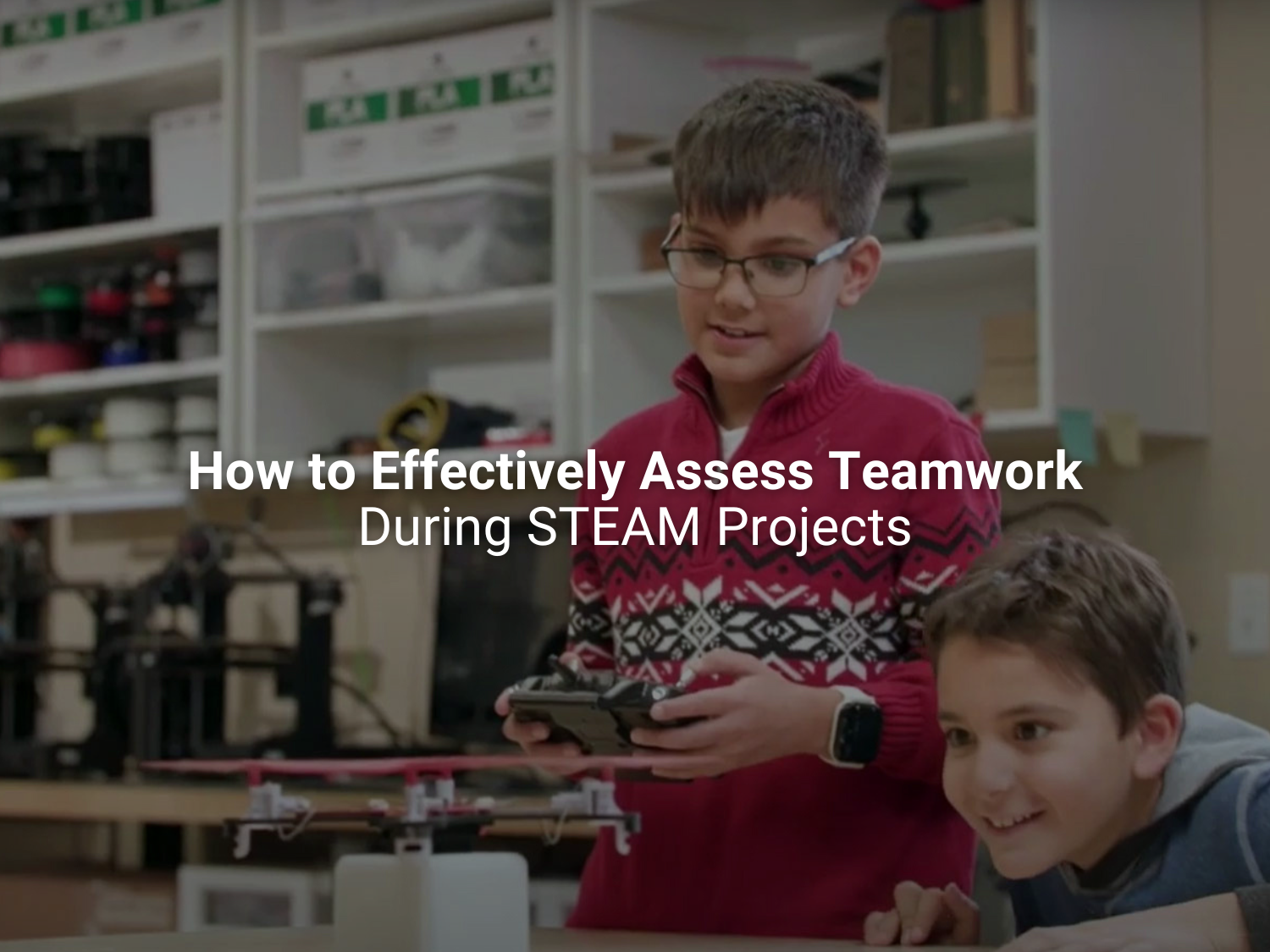STEAM vs. STEM: Which is better?

Chances are, if you have worked in education, you have heard the rising buzz around STEM (Science, Technology, Engineering, Math) and STEAM learning. STEM and STEAM are terms that are often used interchangeably to refer to subjects and work involving hard skills in technical areas. There is, however, a significant difference between the two. It lies in the A, which stands for art. The inclusion of art changes how subjects are approached by both teachers and students. It ushers in the opportunity to teach and learn essential soft skills that ultimately create more flexible, nuanced, and productive leaders in the workforce. To create future leaders, we must start with a strong STEAM foundation in schools.
This article will examine the primary differences between STEM and STEAM, while offering tips for implementing a successful STEAM program. You can also download our STEAM Superheroes Classroom Kit to help your students identify and strengthen their STEAM superpowers!
How STEM Falls Short
STEM alone misses several of the key components that business leaders, thought leaders, researchers, educators, and parents have voiced as critical for our children to thrive in an increasingly globalized society.
Unlike STEM, STEAM includes the critical process of creativity and innovation. While students in STEM programs may have experiential learning opportunities, they are limited to only science, technology, engineering, and math. The future economy requires so much more than an understanding of these areas. It requires application, creation, and ingenuity—the main principles of the A in STEAM.
Learn more about the ways STEAM skills will shape the 21st century workforce, here.
STEAM is better than STEM
STEAM allows us to take the benefits of STEM and fulfill its promise by integrating these principles in and through the arts. STEAM takes STEM to the next level. STEAM allows students to join their learning in these critical areas together with the elements, principles and standards of art and design. STEAM removes limitations and replaces them with wonder, critique, inquiry, and innovation. It provides the whole pallet of learning to students at their disposal.
Here are the STEAM standards that make it so effective in teaching essential hard and soft skills to students.
-
-
STEAM is an integrated approach to learning which requires an intentional connection between standards, assessments, and lesson design/implementation
-
True STEAM experiences involve two or more standards from Science, Technology, Engineering, Math, and the Arts to be taught AND assessed in and through each other
-
Inquiry, collaboration, and an emphasis on process-based learning are at the heart of the STEAM approach
-
Utilizing and leveraging the integrity of the arts themselves is essential to an authentic STEAM initiative
-
How to Build a Successful STEAM Program
Maybe you’re excited about getting STEAM education started in your school, but you’re not quite sure where to begin.
As rewarding as a STEAM-based curriculum sounds to most educators and administrators, the thought of planning and implementing all the project components can feel, well, quite daunting. Creating a STEAM classroom culture that is engaging for students and practical for teachers takes balance.
Here are some resources you can use to get started with STEAM.
-
-
If you’re looking to create a summer program or an after school program specifically, read our tips for implementation. Then, use our checklist to make sure you have everything ready to go.
-
Making time for STEAM projects in a busy schedule is delicate. Click here to read our tips on creating time for it. Also, read suggestions for getting started at the bottom of our Why STEAM Matters article.
-
Introduce Students to the STEAM Super Squad: Captain Collaborative, The Incredible Innovator, Inquisitive Investigator, Technology Titan, Problem-Solving Pro, and Agent Persistent. They’ll see how the members of the squad assemble to solve problems, think creatively, and collaborate on projects. Download the STEAM Superhereos Classroom Kit now!
-
Once you are ready, kick off STEAM learning with TinkRWorks! Trial one of our STEAM projects, LaunchPad. The LaunchPad Trial Kit (Grades 3-8) is a budget-friendly way for you to try out our exceptional, hands-on STEAM projects with a small group of teachers or students.
-
In Conclusion
The integration of art into STEM, ensures students use creativity and innovation in science and mathematics. The best way to set your students up for future success is to implement STEAM principles and projects into their curriculum. Not only will this help students develop essential leadership skills, but it will create a more engaging learning environment. By offering your students the opportunity to be creative and artistic, you invite them to explore their skills in a whole new way. With plenty of resources to help you get started with STEAM, you are ready to introduce it to your classroom.
-1.png?width=350&height=89&name=TinkRworks%20Logo_Learners%20to%20Innovators%20V2%20(1)-1.png)




